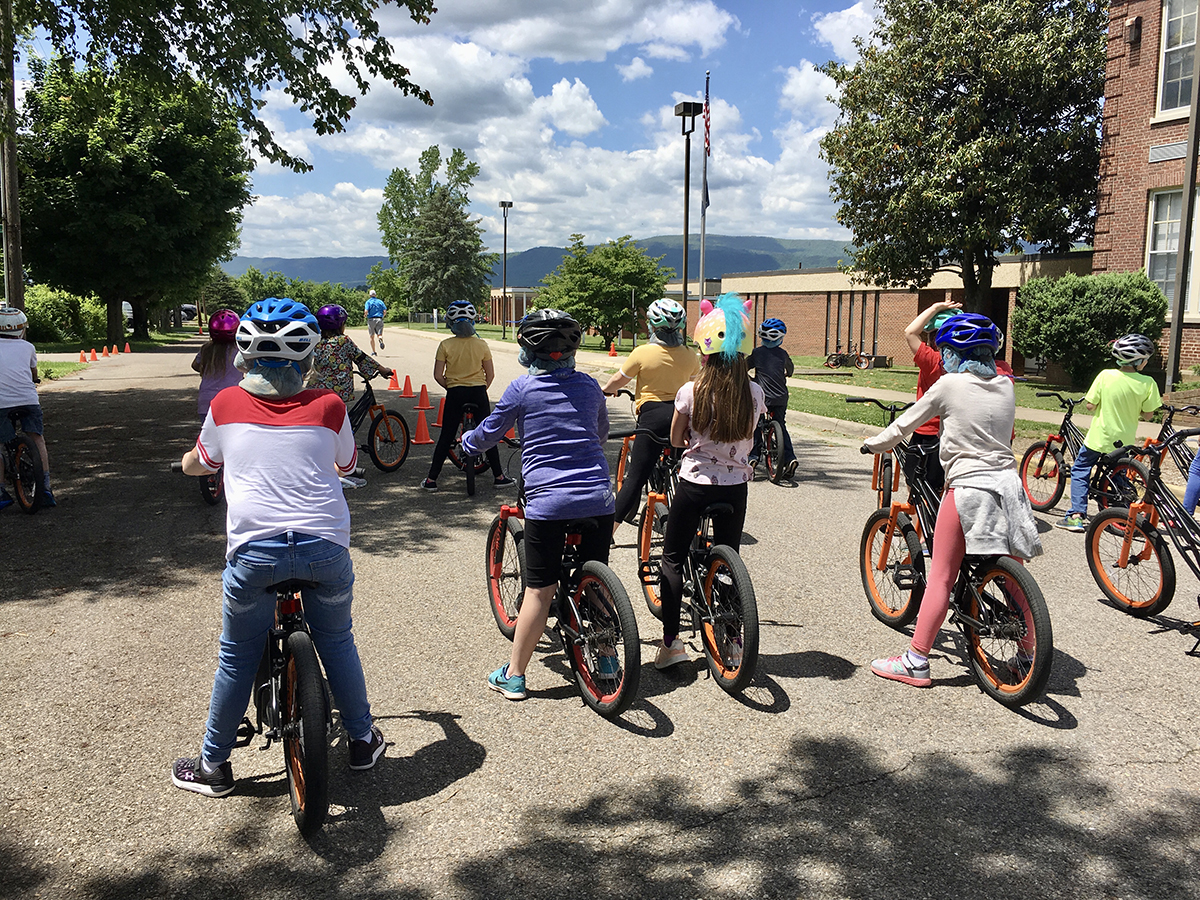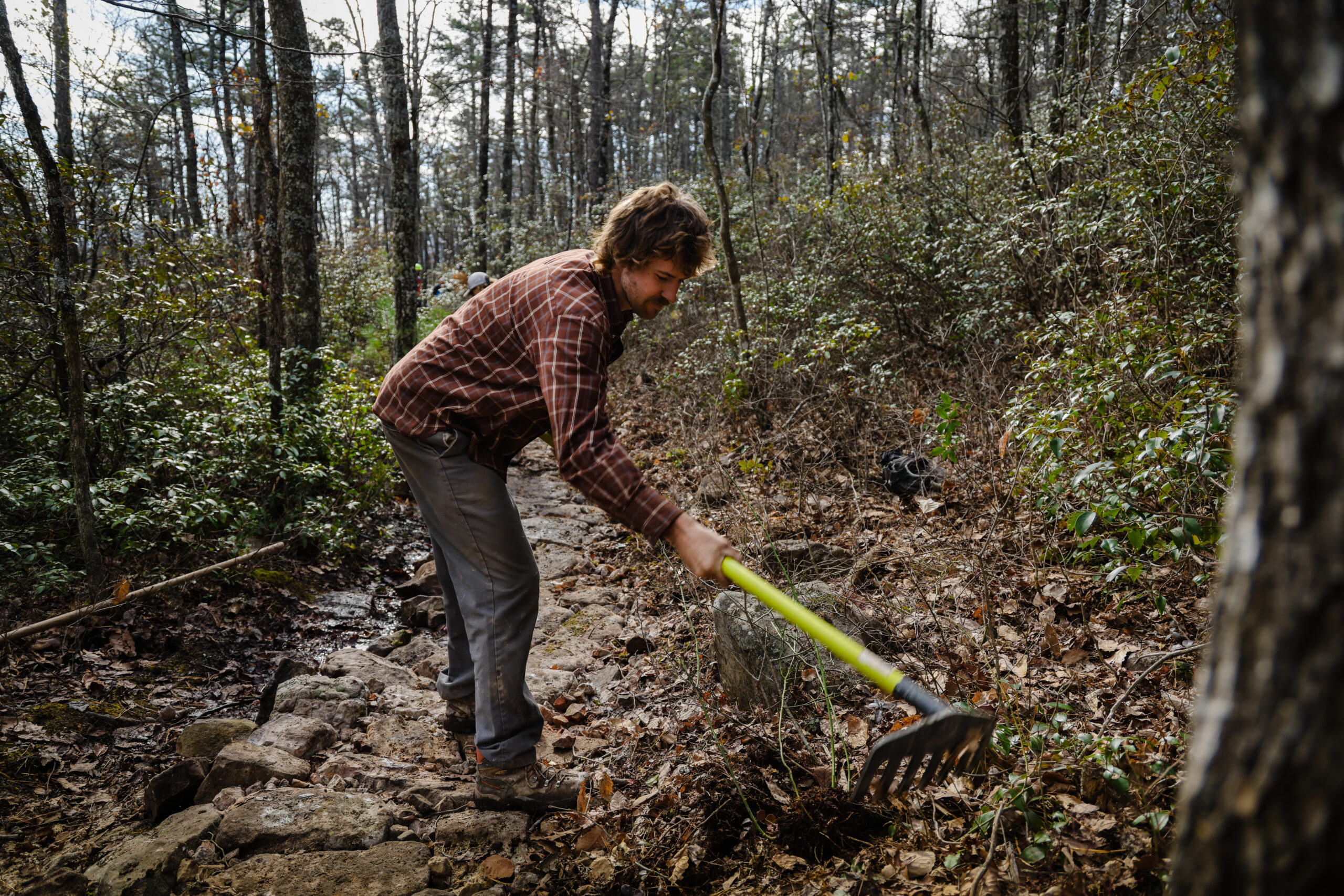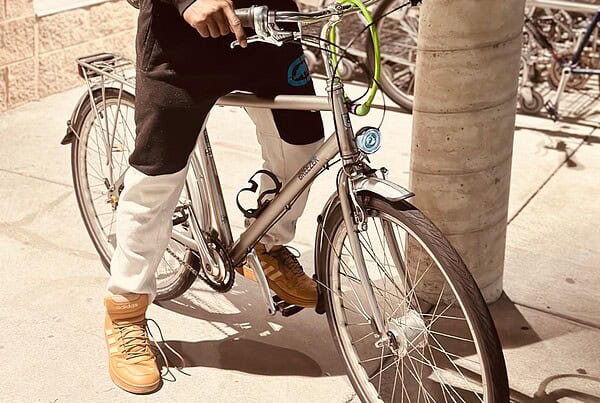As we wrap up 2022, we are asking for your support to help us Spread Pixie Dust in the Valley and ensure everyone has access to safe accessible biking and walking. Can you help us reach our 2022 Pixie Dust goals by midnight on December 31? Please consider a donation to the Coalition.
DonateOriginally published on Notubes.com
STAN’S CONNECTION SPOTLIGHT: SHENANDOAH VALLEY BICYCLE COALITION BUILDS A BETTER BIKING COMMUNITY
Riders in the Shenandoah Valley of Virginia are lucky to enjoy many fantastic on and off-road cycling opportunities. Many of those are thanks to the Shenandoah Valley Bicycle Coalition, a regional non-profit organization that has been working for decades to leverage the power of the bicycle to build better, healthier, freer, more connected, stronger, and more vibrant communities. We spoke with Executive Director Kyle Lawrence of Harrisonburg, Virginia about the Coalition’s past, current, and future initiatives.
At Stan’s, we believe real support means more than just standing behind our products. It means supporting the people who use those products, and the trails and causes that matter to them. Each time a customer registers a Stan’s wheelset to receive warranty and crash replacement coverage, we donate $10 to that customer’s choice of cycling-related cause, advocacy, or trail maintenance group. The Shenandoah Valley Bicycle Club is one of many organizations benefiting from our Stan’s Connections Program.

Stan’s NoTubes: Tell us about the Shenandoah Valley Bicycle Coalition.
Kyle Lawrence: Our biggest goal is to provide everyone with the freedom to bike or walk as part of their daily lives. That can be for recreation or transportation. With that promise, our tagline is “We believe that biking can and should be fun. We believe that change can be playful.”
Our Coalition has a 40-year history, and the magic of it has been harnessing the energy of a bicycle club while moving toward a broader-based community organization. We’re intentional in trying to be more than just a bike club. We think about how we can improve biking and walking for everyone and not just our members. The unique thing about our organization is that we try to be the only bike-related organization in the area. It means we cover a wider range of people and issues. We cross pollinate different types of riding and people across the organization.
SNT: What geographic area(s) does the Coalition serve?
KL: The Central Shenandoah Valley in Virginia including Augusta, Rockingham & Shenandoah counties and the cities of Waynesboro, Staunton, Harrisonburg & Woodstock.

SNT: On the Coalition’s website, we see key messaging like “Empower, Engage, Build, and Ride.” What does that mean?
KL: Because we do a wide range of bike- and trail-related things, we like to think of these as four different buckets of where our work touches people. As the core, the bicycle is the tool to build better communities. Those four buckets help us think about and balance our work and how we interact with the community.
SNT: How did the Shenandoah Valley Bicycle Coalition come to be?
KL: We combined two established local bike clubs into a Coalition. The road club was originally formed in 1982, and the mountain bike club started in 1995. They were merged in 2007 with the intention of being more than just clubs and the larger goal of being a Coalition.
We went from all-volunteer to hiring staff. During that process, we evaluated the different aspects of our work and how we could reach our mission. We thought about the range of things we’d done historically and how we wanted to prioritize our time going forward. We don’t just do group rides, education, or advocacy work. We do all of these things and want to balance our impact.

SNT: What are some of the Coalition’s current and upcoming initiatives?
KL: We have a long history of work on public lands, and trails on public lands remain a big push of the Coalition. In our region, that largely involves deep and close relationships with the [George Washington] National Forest. We’ve been cultivating that for over two decades. It’s an area in which you have to have long term investment.
Greenways and trails for people to get around within our community is another focus. We advocate for funding to make biking and walking safe. This advocacy is also a long term investment. Our Coalition is well positioned to continue to help guide and encourage local investments for the government to build places for people to walk and bike safely.
We’re excited about the Shenandoah Rail Trail, a proposed 50-mile trail from Broadway to Front Royal. It’s one of the single biggest initiatives that will change the [Shenandoah] Valley for walking and biking.
We spend a lot of time on trails close to home — and not just on National Forest land. For example, we’re excited to build a trail system in a park in downtown Waynesboro that was previously a landfill. We’re making more trails that more people will be able to experience near them. That gets more people out there who will then eventually also enjoy all of our trails on other public lands like in our National Forest.
We have a unique long term relationship with private property owner Massanutten Resort that covers an area we refer to as the Massanutten Western Slope. We work with Massanutten to use our trail pass donations to pay contractors to build bike-specific trails on the Western Slope. It’s one of the biggest reasons that trail use has grown in our region.
Our Coalition is the umbrella organization for both the ShenRock and Staunton-Augusta-Waynesboro (SAW) National Interscholastic Cycling Association (NICA) Teams. Our focus is on getting more kids on bikes, but it’s not about racing. Less than half race.

SNT: Any significant achievements of your organization to highlight?
KL: Yes. Some of our more recent greenways in Harrisonburg include the newly opened Friendly City Trail which connects three schools, two parks, and three neighborhoods. It’s an example of how you can leverage local government and how you can invest in local trails and involve a huge percentage of the population.
Over the years, we’ve been able to receive and administer over $800,000 in Recreational Trail Program (RTP) grants for our National Forest trails. Some local favorite trails they’ve covered are on Narrowback Mountain and on Lookout Mountain and include the Wolf Trail on Shenandoah Mountain. These grants have helped with trail construction including rehabilitation and maintenance of existing trails.
We’re proud of the Safe Routes to School program in the region. That’s gotten a lot of local city and county schools teaching bicycle education in P.E. class. It’s important to get kids exposed to riding bikes at a young age and understanding what it can provide.

SNT: What future programs or initiatives are you looking forward to?
KL: We’re most excited about long term planning opportunities. We want to launch a shared vision of where our communities will go. We’re looking at it for the National Forest and for Massanutten Western Slope and for greenways. It’s our hope that our planning efforts and shared vision will unlock more energy and resources to support even bigger, more impactful projects.
SNT: Any fun facts to share?
KL: Yes. We have had the same person running our local road century ride for 40+ years! We also have over 1,400 members.
We’re often one of the only non-profits at the table for transportation funding and planning discussions. It’s a uniquely key role we play.
And last but not least, we also hope to hire a second person soon!

SNT: Besides participating in Stan’s Connections Program, what can people do to help support the Coalition?
KL: If you’re local, there are a wide range of volunteer opportunities from trailwork to advocacy work. There are, of course, memberships, and we’re always looking for other donations or support for trails. There are lots of opportunities to plug in.
But wherever you are, tell your local decision makers and elected officials that you support safe walking and biking in your community. People undervalue how important that is.

SNT: Anything else you’d like to add?
KL: I would encourage people to explore how much impact you can make on a local level. Your involvement can change your town, your city, your community, and your trails. On a hyper local level, it doesn’t take as much as you think to make positive, local change. That’s especially important given our current national climate.
Not enough people have experienced what it’s like to have access to good trails. Sometimes they have to experience it first to discover what their daily life could look like before they understand and appreciate it.







